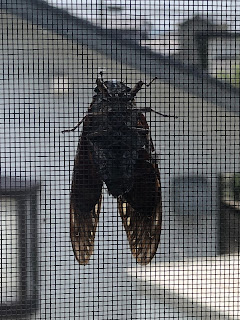This will be my third Christmas in Japan. It is a strange time of the year for me. Less than 1 percent of Japan’s population identify themselves as Christian with the majority religions being Shinto and Buddhism. Despite this, the commercial side of Christmas has somehow slipped into Japan.
Generally Japanese people do not decorate their homes for Christmas, however, most businesses do. In bigger cites you will often find Christmas markets where you can buy handmade crafts and enjoy a variety of festive foods and drinks.
Hakata Station - Christmas MarketThe best thing about the Christmas season in Japan is the illuminations. Most of the larger cities will have very elaborate winter illuminations. In Fukuoka city these can be mostly seen at Hakata station and the Tenjin area. At night many people gather in these areas for an evening stroll and some stop to have a beverage or street food. The best illuminations I have seen in Japan are in Huis Ten Bosch in Nagasaki prefecture. This is a theme park which recreates a small village in Holland. During this season it is transformed into a Winter Wonderland.
One of the strangest practices I’ve seen in Japan is on Christmas Eve, many couples go out for a romantic dinner. It is seen as a romantic day, similar to Valentine’s Day. After the meal couples go for a nice walk to see the lights. I’m not sure where exactly this idea came from but I presume it’s due to the media via Christmas music that has made it to Japan such as love songs like Mariah Carey’s “All I want for Christmas is you” and the Wham’s classic hit “Last Christmas”. There are also some Japanese Christmas songs, probably the most famous is an 80s track called “Boy meets girl, Fall in love”.
I always get a bit homesick at this time of the year and food is probably one of the main factors. Some food that I would normally eat in the winter season in Ireland is hard to find in Japan. Even if you do find it cooking this food can be an even bigger challenge. For example turkey is difficult to find, it can be bought in Costco stores but often it is sold out by the end of November. If you do manage to find a turkey it can be a bigger struggle to fit the bird in a typical Japanese oven. Most Japanese kitchens do not have multiple hobs or a large oven which makes it difficult to prepare a typical western Christmas dinner.
Speaking
of birds, KFC is a popular fast food restaurant in Japan; surprisingly many people
eat KFC on Christmas day. This has become so popular that you have to preorder
this meal in advance in November. This tradition seems very odd to me due to
the stark contrast of eating a well prepared homemade meal and eating a bucket
of fast food chicken.
Christmas cake is popular in Japan. However, unlike traditional deserts like gingerbread men or Christmas pudding, cakes in Japan can be any flavour and are highly decorated. The decoration may not be what you expect for a festive cake.
Sometimes
the imagery of Christmas can get a bit fuzzy in Japan, for example the
character Santa Claus. There are no chimneys in Japan so he can’t enter your
house the old fashioned way. In fact he doesn’t deliver gifts at all. Despite
this, Santa can be found everywhere.








































